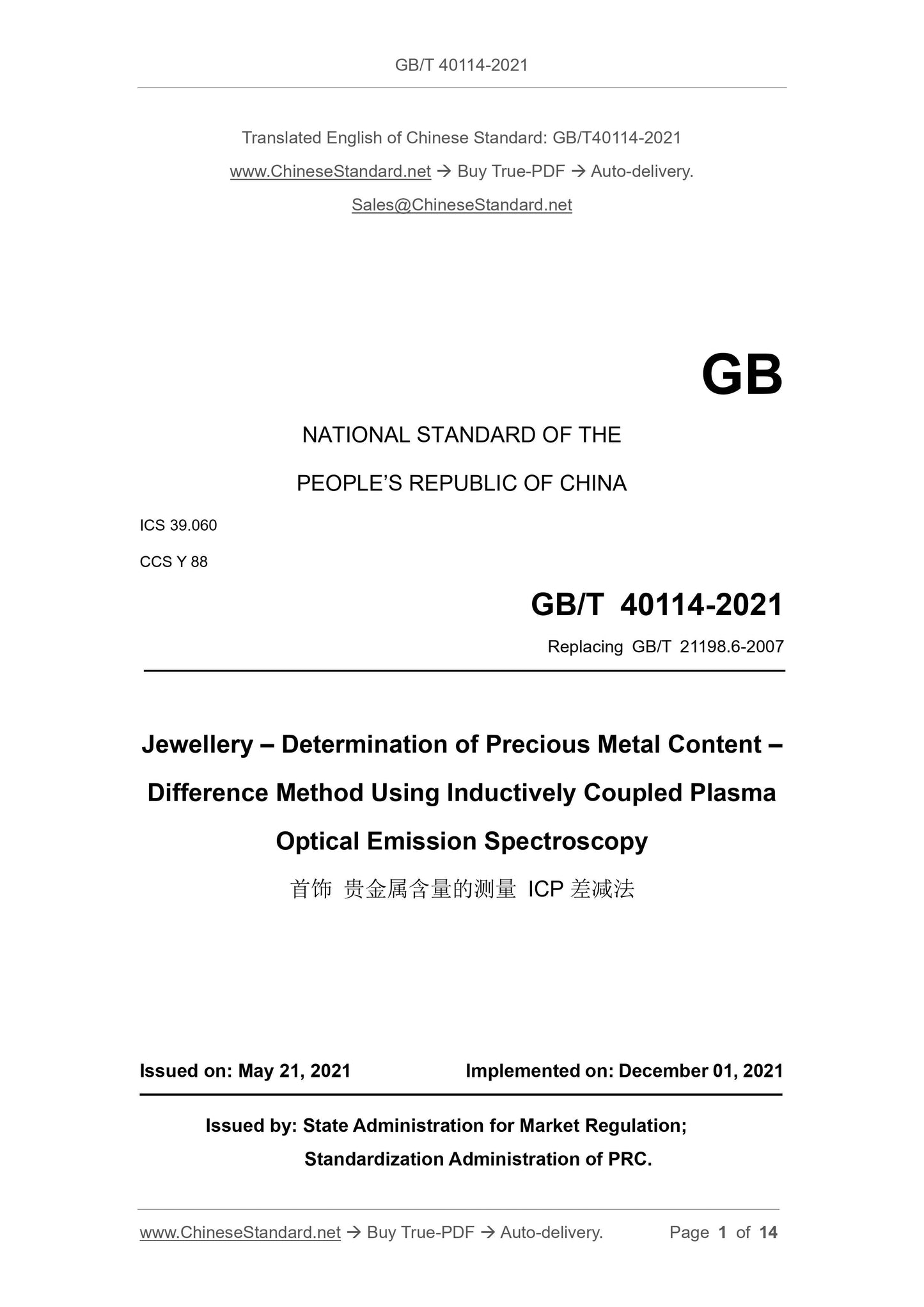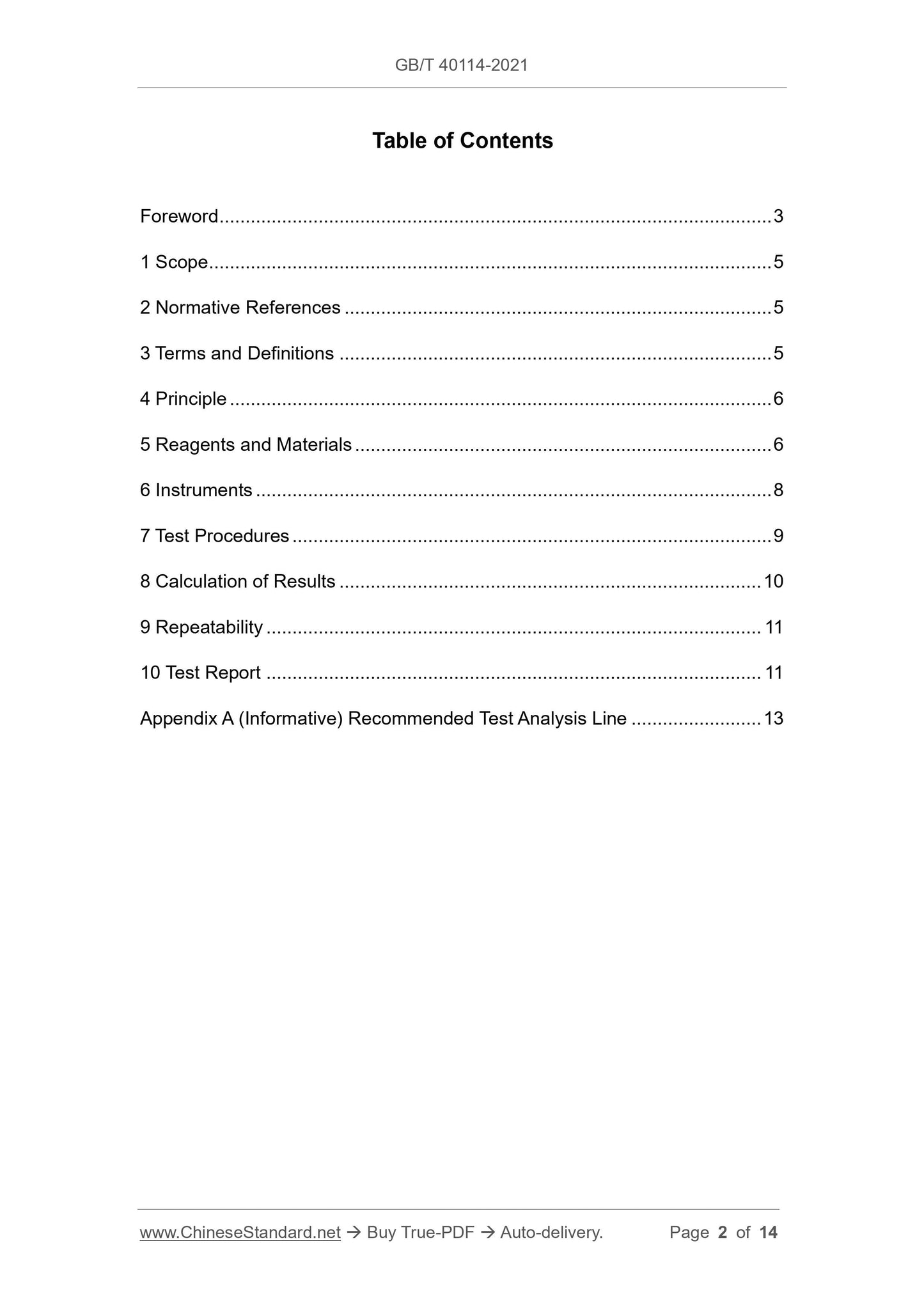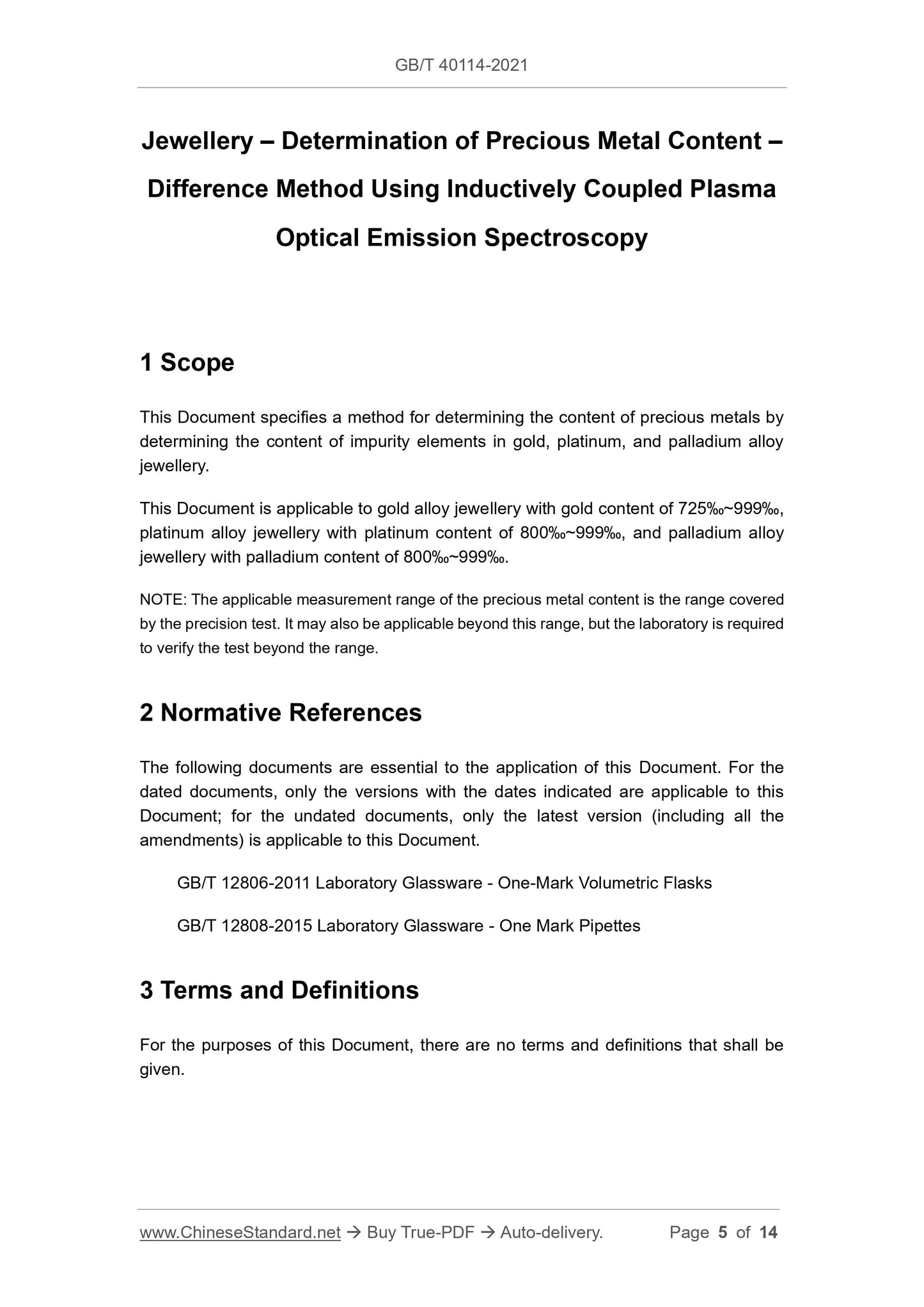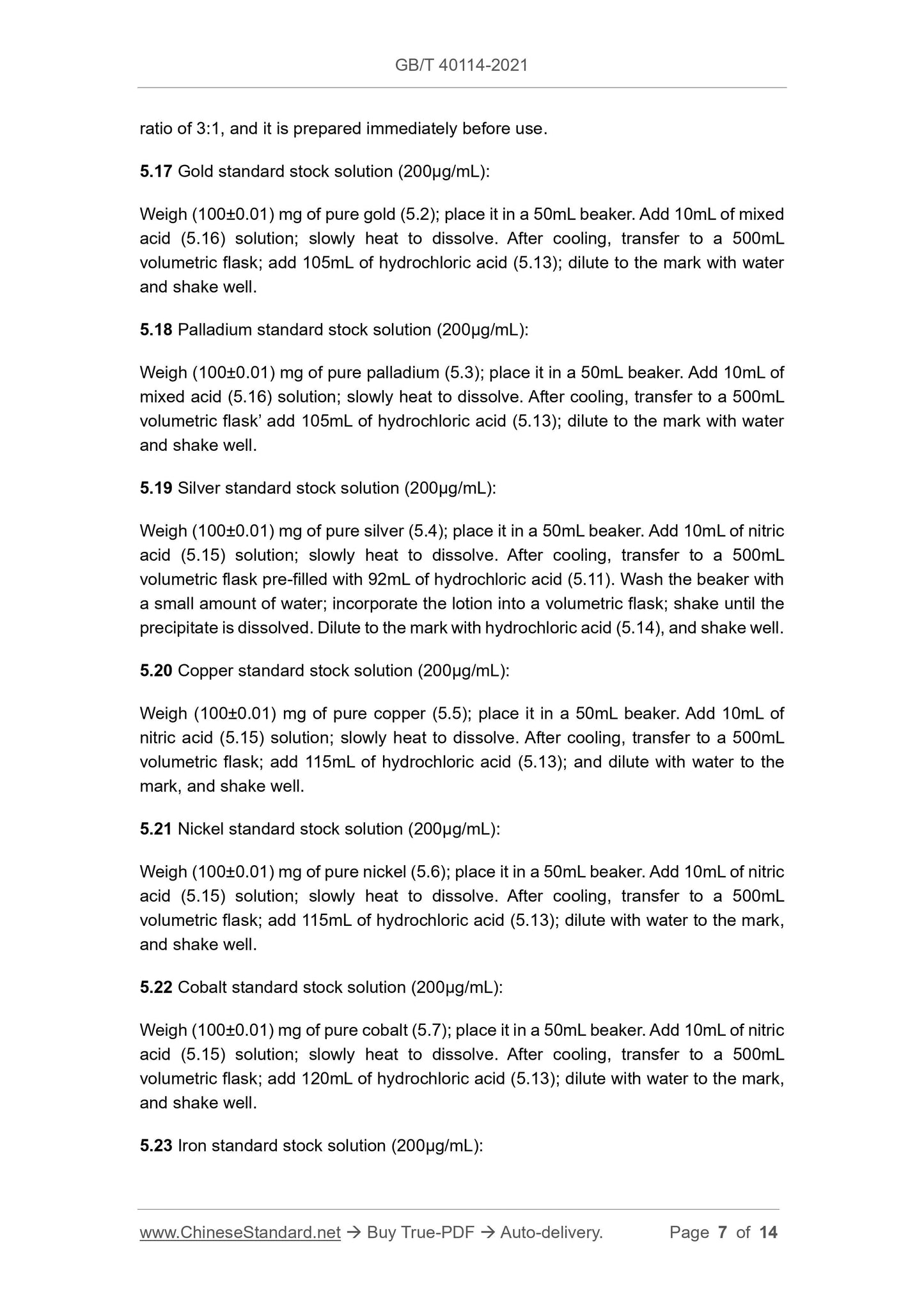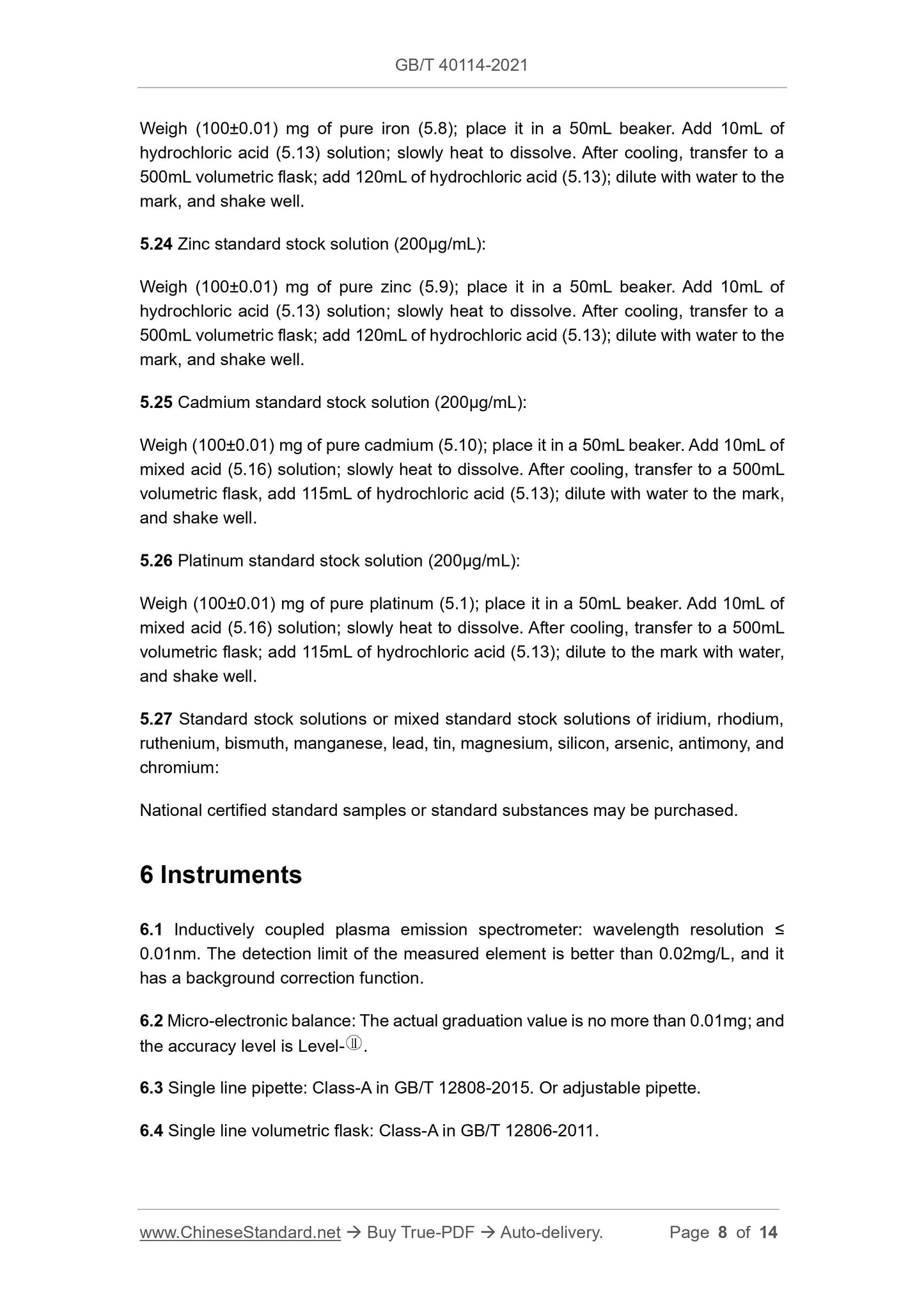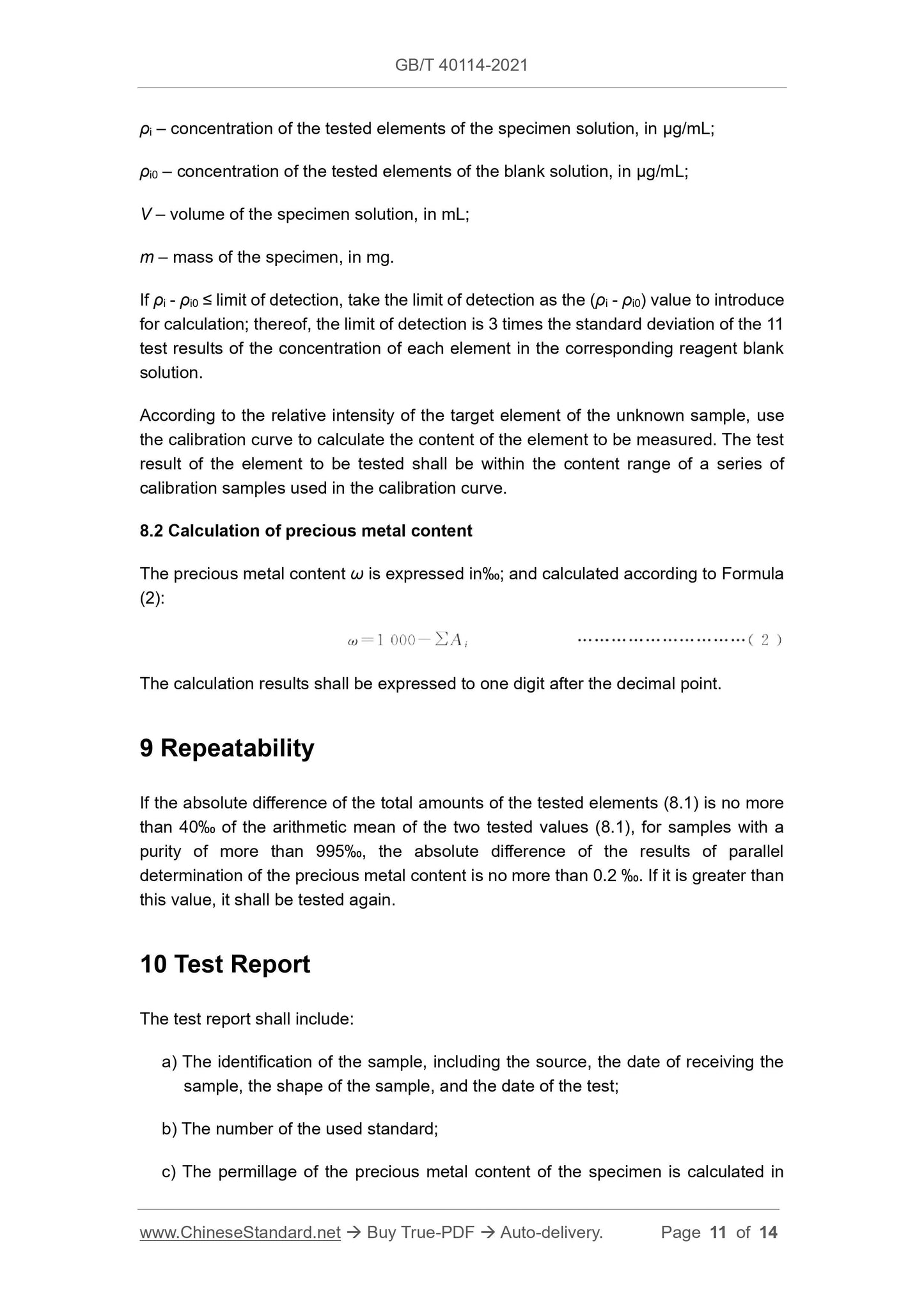1
/
of
6
www.ChineseStandard.us -- Field Test Asia Pte. Ltd.
GB/T 40114-2021 English PDF (GB/T40114-2021)
GB/T 40114-2021 English PDF (GB/T40114-2021)
Regular price
$170.00
Regular price
Sale price
$170.00
Unit price
/
per
Shipping calculated at checkout.
Couldn't load pickup availability
GB/T 40114-2021: Jewellery - Determination of precious metal content - Difference method using inductively coupled plasma optical emission spectroscopy
Delivery: 9 seconds. Download (and Email) true-PDF + Invoice.Get Quotation: Click GB/T 40114-2021 (Self-service in 1-minute)
Newer / historical versions: GB/T 40114-2021
Preview True-PDF
Scope
This Document specifies a method for determining the content of precious metals bydetermining the content of impurity elements in gold, platinum, and palladium alloy
jewellery.
This Document is applicable to gold alloy jewellery with gold content of 725‰~999‰,
platinum alloy jewellery with platinum content of 800‰~999‰, and palladium alloy
jewellery with palladium content of 800‰~999‰.
NOTE: The applicable measurement range of the precious metal content is the range covered
by the precision test. It may also be applicable beyond this range, but the laboratory is required
to verify the test beyond the range.
Basic Data
| Standard ID | GB/T 40114-2021 (GB/T40114-2021) |
| Description (Translated English) | Jewellery - Determination of precious metal content - Difference method using inductively coupled plasma optical emission spectroscopy |
| Sector / Industry | National Standard (Recommended) |
| Classification of Chinese Standard | Y88 |
| Word Count Estimation | 10,160 |
| Issuing agency(ies) | State Administration for Market Regulation, China National Standardization Administration |
Share
